U.S. Jewish Olympians are on fire
Permanent linkThe Frashley Chronicles, Part 2: Leaving on a Jet Plane
Permanent linkBack at Jewish Camp for a Day
Permanent linkLet them eat fudge
Permanent link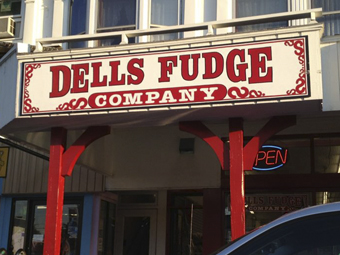
I miss the idyllic summers of my youth. I long for the lazy summers I spent as a kid splashing around swimming pools, erecting sculptures in sandy beaches, painting “masterpieces” in summer art classes and picnicking at Ravinia Festival while listening to Peter, Paul and Mary. As I entered high school, I spent warm summer nights rehearsing in a summer theater program, followed by seemingly wild, late-night excursions with friends in our parents’ station wagons and mini vans to chains such as Applebee’s and Denny’s in the suburbs. Often, we’d build bonfires on local beaches beneath star-speckled skies, imagining life beyond our teens.
Summer now consists of a seasonally-seamless work routine, with longer days of sunshine seen only through tinted, sealed, office windows. Shadows of my scarcely raucous youth emerge on weekends when my friends and I go out to play in Chicago at summer festivals, outdoor cafes and evening concerts. Rarely do we approach a weekend or even a single day with the same sense of delicious, aimless abandonment that we took for granted as children.
We spend much of our childhood trying to imagine adulthood; we spend much of our adulthood trying to re-imagine our childhood. We act like children when under duress; we grasp for child-like innocence when recovering from duress.
This summer, my friends and I took a spontaneous trip to the Wisconsin Dells to help distract my friend who’d been through a bad breakup. It was one of the most spectacularly silly weekends I’ve had, perhaps, since I was a kid. Many of us had been to the Dells as children, but had fuzzy recollections of its landscape. I could only recall large-scale waterslides. I spent four years in Madison for college and considered myself a sort of Wisconsin aficionado. However, spending four years wearing red, eating cheese curds and saying “aboot” with the Sconnies didn’t fully prepare me for the Dells.
The Dells is in fact a trippy, trashy, child-adult play land where cell phone reception does not exist. The “city” is filled with see-it-to-believe-it attractions such as a deer petting zoo, an upside-down White House museum, a wizard quest experience, waterslides built to look like mouse traps, roller coasters with animals protruding from them, mock Greek and Roman ruins, all-you-can-eat pizza buffets with ranch themes, Native American trading posts, rumored cult-run restaurants, cheese shops, fudge shops, t-shirt shops and more.

Our ambitions for the weekend loosely consisted of eating junk food and not feeling guilty about it, swimming, visiting the Wisconsin casinos and viewing as many cheesy (pardon my pun) attractions as possible. About seven of us infiltrated a friend’s lake house nearby. While we had child-like goals for the weekend, we rallied like ladies. We lamented our lack of cell phone reception everywhere we went and trucked on. We prepared a picnic and ate by the lake, followed by hours of floating on inner tubes, casually sipping Leinenkugel’s Summer Shandy (a cross between beer and lemonade) and cooling off with watermelon.

One of our nights on the town including playing arcade games, posing for photos with totem poles at Native American trading posts, sampling local pizza (buffet-style, of course), and most memorably, playing dress-up. After comparison shopping between the five old time photo shop studios on a block (very serious business), my friends and I herded into one of the larger shops and debate the merits of various costumes and time periods. We settled on old time saloon girls, namely because the props were the coolest and we got to wear corsets. A childhood dress-up and theater veteran, I was filled with glee at the prospect of wearing ridiculous costumes, if only for a moment. I even whipped out makeup and shared with my friends in preparation for this dramatic photo shoot.
After being released from the surprisingly tight costume corsets, we abandoned the wild Dells night life for another round of dress-up at the house. We all packed for the occasion with Jersey-Shore-like attire. We spent a couple hours, selecting outfits, giving each-other make-over’s and then spent the remainder of the night dancing in the lake house and eating s’mores. That night, we learned new hairstyles, new make-up tricks and new dance moves. No men. Just us. We were 10 again.
We tackled many other important sites that weekend, including sampling several fudge shops, a cheese shop, a visit to Ripley’s Believe It or Not, a trip to a nearby casino—at which we played penny slots—followed by a closing visit to the film, Magic Mike. The entire weekend was essentially a long girlish sleepover where we ate junk, braided each other’s hair and ogled famous, hunky, movie stars.
Had you met me at age 9 or 10, I might have described my ideal weekend similarly. Sometimes, we need to act like a kid again to handle the adult world. A little spiked lemonade helps too.
Skinny Fat
Permanent link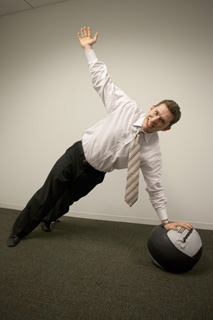
Skinny fat is a term that’s thrown around all the time. It’s not like jumbo shrimp, but figuring out the term might require fuzzy logic.
For a visual definition of skinny fat, think of the last time you were at the pool or beach. You see someone who has thin arms and legs with a gut. I’m afraid that my love handles (we all have them) will morph into a gut. Fighting the battle is hard because it is so easy to gain a few pounds. The disadvantage to being skinny fat is that it’s not that noticeable, like visceral fat, which is the fat that hangs out around your vital organs. You don’t think it’s a big deal but in reality you put yourself at risk for:
• heart disease
• type II diabetes
• stroke
• breast cancer (women)
• colorectal cancer
• sleep apnea (men)
• and the list goes on...
Skinny fat is really having a body fat percentage that is higher than recommended for your age and gender. In general, for men you want to have a body parentage between 15-20%, women 20-25%. Your body fat percentage is more important than the number on the scale or your Body Mass Index (BMI). BMI should be removed completely as a medical term. It’s a formula that’s calculated based on weight and height.
Body fat percentage can be measured with several different tools that calculate the percent of fat to muscle in your body. You obviously want more muscle than fat because it helps you move better, burn fat, and reduces your risk for several health problems. Almost any gym has equipment to measure your body fat percentage. There is one slight problem; all the various tools for calculating this number (bioelectrical impedance, skin folds, DEXA, Bod Pod) will give you different numbers. My suggestion, pick one method and use that each time. You might not get the most accurate reading but you will notice a trend, hopefully a positive trend.
The best way to keep track of this number without fancy equipment is your pants. If your pants are tight, eat better and exercise more. If your pants fit perfect, then you’re maintaining your weight. How you look and feel in your clothes is always a good indicator, unless your dryer shrinks everything.
Keeping your body fat in check is done with exercise and diet. Eating healthy will help you lose fat and muscle. Weight lifting helps you build muscle mass. The more muscle mass you have, the more efficiently you burn calories. I’m not suggesting you bulk up like Arnold back in the day, but a few pounds of muscle usually isn’t a bad thing. Aside from using steroids, Arnold was also genetically gifted. Most of us can lift weights without looking like a “Hans.”
For more information on body fat percentage and wellness contact me at rkrit@fitwithkrit.com.
Transformations.
Permanent link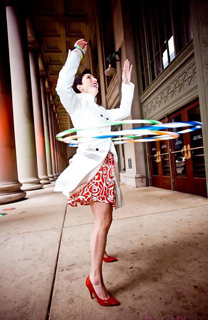
It has been quite a ride the last 18 months. Some would say it was colored by hardship and trauma, others may argue it was highlighted by triumph and strength. Depending on where you start and where you finish, I would argue it was and is all of the above.
There have been many transformations, many juxtapositions, many changes over the course of the last 18 months.
From tied up to untied, from the shadows to the sunlight, from sickness to health, I have seen it all.
And here— in this online space— I have captured these transformations, isolated these moments in time, portrayed these hardships and triumphs in a way that is unique, that is my own, that is at my disposal for a rainy or sunny day.
In this new phase of survivorship, cancer is mostly positioned in the chorus as opposed to center stage. She is no longer singing ballads on her own, but rather hums at a low murmur. While I have learned to expect and accept that she may never be silent, I am also grateful that on most days she no longer overpowers. Her role in the chorus is to highlight and support the lead, a position that she is better suited for, and that I am more comfortable with.
My relationship with her is in a constant state of flux. There are days when I am overwhelmingly grateful for the experience, and for the new set of spectacles I have to see the world. And then there are days, where she tricks me into hunting for tumors in my neck and chest, and she fools me into thinking that my scar tissue is yet another mass.
And so here I am 18 months later with a new set of eyes for which to see the world, but with residual scars that lie beneath.
Perhaps I couldn’t have experienced the triumph and strength, without the hardship and trauma.
And perhaps my experience with cancer will be yet another experience that I draw upon for my next challenge, my next hardship, and my next victory.
Check out Jenna’s profile in the latest issue of Chicago Jewish News, here.
How was it? And Other Complicated Questions.
Permanent link.jpeg)
"So, how was it?"
"Was it crazy?"
"Were you scared?"
"Did you love it?"
"Was it weird?"
"Was it hard?"
"Did it really look like that?"
The questions mount as I reconnect with family and friends, after three and a half months in India. This is a second round homecoming, I spent the majority of 2010-11 teaching and traveling in Asia; but I'm finding the questions more difficult to answer this time around. It's not that I don't have answers, I do. In fact, rejecting the standard, "It was amazing" I probably have better answers. It just seems that sometimes mine aren't the answers that people expect or want to hear and when the expected answer does come, the caveat or further explanation is not absorbed.
In January 2012, I moved to New Delhi to participate in the American Jewish World Service Volunteer Corps in India. The program, which a friend once referred to as the "Jewish Peace Corps," places Jewish professionals at local working in fields ranging from environmental conservation to public health, education and human rights. Volunteers are expected to provide sustainable support, as per a work plan developed based on the skills of the volunteer and the needs of the NGO. I was placed at a small Delhi based organization, which provides capacity building and modest financial support to grassroots individuals and organizations working to advance Dalit rights.
India, one of the largest most populated countries in the developing world, is facing both rapid growth and large-scale social, environmental, and developmental challenges, many of which are hindered by the persistence of a social caste or class hierarchy ingrained in nearly every aspect of society. While it is true that living, working, economic, and social conditions vary to levels which rival the nations geographical and environmental diversity, Dalits, or members of the formerly "untouchable" castes, continue to face wide spread discrimination throughout many parts of the country. This again ranges from unequal educational and employment opportunities, to physical abuse and sexual exploitation. The mission of the NGO at which I was placed, like many of its partners and counterparts in the Dalit movement, is to wipeout caste discrimination throughout the country. Through various fellowship programs, grant opportunities, and training workshops the foundation hopes to empower and aid Dalits in their fight for equality.
So, what does this all mean in terms of my volunteer placement? And how does it affect my response to the curiosity and queries of my friends and family?
On a larger scale it means that it was not about me, but rather the group, the movement, and the larger goals being supported. In the day to day, however, it meant I split my time between work in the office, field visits to foundations partners, and workshops aiming to train and select new fellows/grantees. In the office I provided support in the areas of English reporting and editing, developed leadership training sessions for the foundations young professionals program, and helped document job descriptions including clearly defined roles, goals, and performance indicators.
In the field I accompanied NGO staff to observe and evaluate the work and success of current fellows and grantees. I also spent time meeting and listening to stories told by the people for which the work was being done, the Dalit families, mothers, school children, domestic workers etc. all feeling the burden of a castes inherited at birth. It's when I try to recount these stories, to communicate to the best of my abilities, what my NGO was doing and who they were working for that I run into road blocks. "That's really heavy." or "So, you would never want to live there." A shift in conversation to lighter subjects, and often a comment that leads me to believe India has been written off as backward, or terrible, or scary.
But, that's not what I am trying to say. I am not trying to depress or scare people. I am trying to have the conversations they started, trying to answer the question, "How was it?" The point is that these things, the discrimination, the violence, the poverty, they are happening. They are a very real and present part of daily life; but they are not the only things happening. Activism is happening, community organizing is happening, and awareness building and education are happening. I want people to understand the problem (one of many, but perhaps the only one on which I have any basis to speak). I also want people to understand that there is a solution, or there will be. Maybe it hasn't come yet, maybe it won't come from the NGO I was placed at (or maybe it will!), but it will come from somewhere and likely it will come from people who are dedicating their lives to the fight.
And that's a very exciting, positive, wonderful thing.
I can't focus on the positive and ignore the negative, or vise-versa. I certainly can't bypass the expansive space between. My life in India meant daily ups and downs, seemingly endless frustration followed by equally endless positive surprises. Similarly, when someone asks about my NGO placement, my daily responsibilities, and the people I met, it will be heavy, but it will also be beautiful and inspiring. So, if a person wants to know, I ask them to take a moment to look at the big picture, to try to understand that I can't give an elevator pitch about the experience. I can't make definitive statements about the country as a whole and I certainly cannot provide one-word answers.
To my friends and family and everyone else that wants to know, I will respond each and every time, India was a lot of things. Let's talk about it.
For more information about The American Jewish World Service and Volunteer Corps, please visit: http://ajws.org.
My journey as an interfaith leader
Permanent linkInterfaith Leadership Institute
DePaul University Student Center
June 21. 2012
.jpg)
Not long ago, I was sitting right where you are…no, I am not a child prodigy that graduated from college at age 12, I just look like it! I was graduating from college, at age 22, where religion had been a MAJOR part of my experience.
I was a founding member of the Heretics Club, co-president of our Jewish Union, active in IFYC and even studied Comparative Religion. There was no doubt in my mind that religion would play some part in my life, but what that was…I had NO idea. I contemplated Rabbinical School, as my family often called me Rav Fields. I looked into a degree in Jewish Communal Development. I applied for pretty much EVERY job posted on JewishJobs.com and all the ones on Idealist related to religion. All of this was getting me nowhere except nervous and confused! So, I decided to bolt! Well, not really bolt, but explore for a little while.
I decided to accept a Fulbright and move to Thailand. My role was to provide assistance to English teachers and help teach the language while serving as a cultural ambassador for the U.S. Shortly after my arrival at Sansaiwittayakom, I realized that not only was I the "American" but the "Hew." And to many of those that I encountered, I was the only Hew and one of the only Americans they had ever met. I took a step back, recognizing that this was an amazing opportunity to figure out what being American and being a Jew meant to me. If I was an ambassador, I had to know what I was an ambassador for! I wasn't just Jewish because I celebrate different holidays than Thais.
I took my time there to study, explore and engage. My students did projects on the world religions. I learned from my students that Judaism was key to my life. It meant community. Tradition. Tikkun olam. What I began to see was that being away from community really made me want it more.
And then…I came back to the U.S. I jumped right in to a community (AVODAH: The Jewish Service Corps) and no longer had to think about what religion meant to me…it was just there, part of my life, day in and day out. I was a Jewish leader, community advocate, I had no choice, and I loved it. But then the year ended. It was now my turn to actually sit down and decide where I wanted to go in my life and how I wanted religion to be a part of it.
There was no question in my mind that I wanted to work towards tikkum olam, repairing the world. I wanted to build community. And I really wanted to surround myself with others who had the same values as me. I will not say that I know where I am going, but I will say that I am happy and content with where I am today. It was not easy, but l believe I have found where I belong. I currently work in the Young Leadership Division at the Jewish United Fund where I am able to build Jewish community as well as support the community at large. I plan events, network and fundraise.
Now you might be asking yourself…how is this interfaith? And my answer is that it cannot be more "interfaith." Fifty percent of the Jewish community in Chicago enters an interfaith marriage. That means that a large number of the people whom I work with are not or were not originally Jewish, yet we ALL want to repair the world. We all want to make a difference. We are all working together to provide critical resources that bring food, refuge, health care and more to 300,000 Chicagoans of ALL faiths and 2 million around the world. We are working together to support 70 agencies that care for children, immigrants, low income, the elderly and disabled. JUF is the central giving address for the Jewish community in Chicago and one of the largest social welfare agencies in Illinois, which means that thousands every year are counting on us to support the community, Jews and non-Jews alike. What could be MORE interfaith than that?
Who knows where I will be five years down the line? And if you do, please let me know! But I do know, that unexpectedly, interfaith work has become a part of who I am each and every day, and I am proud of it.
All the single ladies
Permanent linkPinchas: 24 Tammuz 5772 / July 13-14, 2012

In this week's portion, Pinchas, we find a unique stand taken for women's rights. The five daughters of a man named Zelophechad (try learning to spell that as a child!) approached the Israelite leadership and shared that their father had passed away without leaving any sons. They hoped that despite being women, they would be able to inherit their father's holdings, which at the time was not the norm. Moses brings the question to God, who states that the daughters are just in their request, and that if a man dies without leaving a son, his daughters shall inherit.
While today this may not seem like such a big deal, to suggest a few thousand years ago that women were able to inherit property was quite significant. And while the decree may not have been perfect according to contemporary egalitarian standards (as after all, sons would still inherit before daughters), in the time period, it was assumed that the daughters would marry men who had their own holdings, and thus there was arguably less of a need for them to inherit than there was for sons.
There are still a number of places around the world where women aren't treated with such respect. Frankly, while not as bad as in some other countries, there are myriad arguments to be made that women in the United States have yet to truly achieve equality with their male counterparts, be it by the failure to pass the Equal Rights Amendment or the reality that women are often paid less than men to do the same job. Only 17 of 100 U.S. Senators are women (17%), and only 73 of 435 U.S. Congresspersons are women (16.8%), despite women being almost 51% of the U.S. population. While the glass ceiling may now have a few holes poked in it, it is far from shattered.
While one might assume a lack of what we might contemporarily term "equality" in the Orthodox world today, at least from an egalitarian point of view, even within the liberal Jewish community women often are not given the same respect and/or opportunities as men. For example, female rabbis often have a much harder time securing pulpit jobs than their male counterparts; and when they do secure such jobs, they are often paid less, because the assumption is that they have a male significant other who is bringing home the primary paycheck.
This Shabbat, in honor of the daughters of Zelophechad who asserted their rights, reflect on the women in your life. Find ways to show your appreciation and gratitude to them, and resolve to make our Jewish community and the world around us one in which women are full, equal partners, who are given the respect and honor they deserve.
Those were our times: Just Kids by Patti Smith
Permanent link
I have two Patti Smith songs in my iTunes library: one is a live performance of "About a Boy" from the 1997 Tibetan Freedom Concert, and the other is a cover of "Don't Smoke in Bed" from the eternally awesomely named Ain't Nuthin' But a She Thing. For most of my life, these and her status as "the Godmother of Punk" were all I knew about her. I never expected I would have feelings about her and her work, but as it turns out, that's only because I hadn't met her yet.
My favorite podcast for puttering around my apartment is NPR's All Songs Considered. Last month Smith was a guest DJ, to promote her new album, and before hitting "play" in iTunes, I had no idea what to expect. What does it mean to be the 65-year-old Godmother of Punk? I admit I only half-listened while I did my dishes, until her first song stopped me in my tracks. It was an anthem for the people of Japan in the aftermath of the tsunami, and the opening invocation gave me chills. After that, I listened, and became both interested in and impressed by this woman who spoke softly and beautifully about Amy Winehouse, growing up in New Jersey and her love of poetry.
Luckily for my newfound curiosity, Patti Smith has written an autobiography of sorts, Just Kids. I say "of sorts" because it's more properly the biography of a friendship, an amazing bond between her and the photographer Robert Mapplethorpe. I had heard of it when it came out a few years ago--it had won widespread acclaim and a number of awards. In an effort to curb my terrible book-buying habit, I hit up my library for a copy, but Patti has defeated me: I think I need to own this book.
If you only read Just Kids for its parade of fascinating experiences, discovering late '60s and early '70s New York from its underbelly to its heights, you'll get a great deal out of this book. If you only read it for her prose, which is marvelous, you'll absolutely enjoy yourself. But you can also read it for the contact high of her incredible love for Robert. She lays out their secret language, their struggles, their explorations, their growth as people and as friends, and it's a gift to be allowed inside it.
Just Kids is a period piece, and it's tempting to wish yourself into her shoes, to imagine hanging out with Janis Joplin or Jimi Hendrix. Smith does not cut corners about the unglamorous parts of artistic poverty. As much as she writes about beauty and excitement and creation, she doesn't spare us the lice or the hunger or the deaths of friends. We're not spared heartache even in the happy times: throughout the book is the specter of Mapplethorpe's death from AIDS, engrained in the text from the first sentence.
This book is a biography of a friendship, though, and the most interesting thing to me about Just Kids as a period piece is how the mechanics of friendship have and haven't changed. Patti and Robert are always making each other little gifts; they express themselves to each other with a lot of tactile effort and physical creations. They take long train rides or spend hours at diners together; they write letters and make collages or poppets or jewelry. Today, for those ordinary adorations, we send links or texts or posts on a Facebook wall. I found Patti Smith because of a podcast, on iTunes, on an iPod.
For me, this raises a lot of questions about authenticity, and why, when we have all this technology and the amazing things it affords us, we're so taken with nostalgia and "retro" and vintage experiences. I saw the music video for Beirut's "Postcards from Italy" for the first time while reading Just Kids, and it's assembled entirely of '60s-style home video footage, some staged and some, perhaps, "real." Someone once said that there must be a German word for the longing you feel for a memory you never made, and I get that feeling from this video. Someone is documenting this vacation, but everyone else is entirely present. Which, today, almost makes it a fantasy world.
I have wonderful, meaningful, important bonds with people I haven't met in person, and the point of Just Kids is not to valorize Robert and Patti at the expense of how we live in the world today. We're authentic, however we choose to reach out to people. It's wonderful to be able to see inside someone else's authenticity, though. Just Kids is fearless in that respect, because that necessitates vulnerability too. If authenticity is building yourself up, being your own maker and choosing how and what you love, then Patti Smith has it-and that is, in the end, pretty punk rock.
Five holidays that are more important to me than Chanukah
Permanent link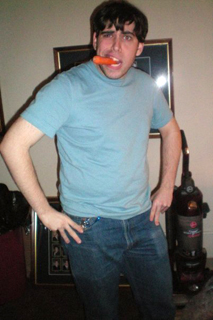
Chanuka, Chanukah, Chanukkah, Hanukah, Hannukah and my personal favorite, Cha-noo-kah. The list goes on and on but I only have so much time here. As you can see, there is not as much care put into the spelling of this holiday because, contrary to popular belief, this holiday is not nearly as important as a multitude of others. For Chanukah, we usually spell it whatever way is the simplest to get the point across. While Chanukah is great and all, it just doesn't hold a light (see what I did there?) to some other holidays. A brief explanation might be needed. See, Chanukah, put simplistically, is about how we won a war and wanted to have light but only had enough oil for one night. Making oil takes eight days. Miracle happens and oil lasts eight days. Hence, Chanukah is celebrated for eight days. And as you can see, when it comes down to it, this is a holiday to celebrate that we made some oil. In light of that (see what I did again?), I'd like to point out five holidays I find to have greater significance.
But first, a small disclaimer.
The following is entirely my opinion and does not reflect the opinions of the wonderful population of Jews as a whole. This is also not meant to be a criticism against Chanukah but simply an enlightening of some of the more significant holidays to me. If you really want to know the most significant part of Chanukah to me, go read Hershel and The Hanukkah Goblins.
5. Purim AKA Jewish Halloween
Significance: Haman, royal vizier to King Ahasuerus, planned to kill all the Jews but his plans were foiled by Mordecai and his daughter Queen Esther. Hence, we dress up or masquerade as some say.
Why it's important to me: This holiday ends up being just a whole lot of fun. We often have Halloween-like parties. There's a lot of fun getting mad at the bad guy, Haman, of the story. When we tell it, it's always fun to yell, hiss and make obnoxious sounds with gregors (noise makers, look it up) every time his name is mentioned. When it comes down to it, I simply enjoy the opportunity to dress up as a sexy Mordecai.
4. Rosh Hashanah AKA The Jewish New Year
Significance: Read the thing after number four. But also this is High Holiday #1.
Why it is important to me: Read the thing after number 4. But also this is High Holiday #1. Yeah, it's kinds a big deal like that hence the repetition. This is a time of the year when many Jews will go to temple. In fact, it gets so popular that you need tickets and baby, sometimes they ain't cheap. Best part was I got to take off of school and as an adult, work. We eat apples and honey to ring it in sweetly and oh, is it sweet. However we really don't have any sort of countdown. And we don't make resolutions. Now that I think about it, come this Rosh Hashanah, I'll be the one the back counting down loudly while lying to everyone that this year I'll exercise more and I'll stop drinking my calories.
3: Passover AKA Over a week of what is essentially the Atkins diet
Significance: The Jews were being held as slaves in Egypt by a bad Pharaoh, and then Moses….you know what, go watch the Ten Commandments. Or better yet, the Rugrats Passover Special.
Why it's important to me: I wanted to start this part by apologizing that I had to pass over writing about this in April. Heh heh. But honestly, Passover is wonderful. It's a time I see all of my family and we get tell the story of Passover during our Seders, the most essential part of said holiday. Well that and we drink four cups of wine. But while in college, I got to take off of school if it fell in the middle of the week. What's best about this holiday is how it's sort of our Easter equivalent. We hide the Afikoman, (a piece of matzo that is known as dessert, and how it is considered dessert, I will never know) and then the kids get to find it and the winner gets a little something something. Usually that little something something is a dollar. But still, a dollar! But basically it's a holiday about our freedom and the creation of the 10 Commandments. And yes, I am talking about the movie because it may be the only movie that is actually better than the book. I love me some Yul Brynner. But the most important part of the holiday to me is the treat known as Joyva Ring Jells. Some of you may know this but it is a delightful, scrumptious treat comprised of a ring of raspberry jelly dipped in chocolate. I would die for this treat.
2. Yom Kippur AKA The Day of Atonement
Significance: We fast for 24 hours to cleanse ourselves of sin. This is High Holiday #2.
What it means to me: This is honestly the Jewish holiday that means the most to me. I am not the most religious of individuals, but I thoroughly embrace my Judaism and will never know anything but what it means to be a Jew. This is truly the day I am most likely to go to temple. I will, without question, not eat for 24 hours. What's interesting is that I might not entirely believe that my sins for the previous year have been erased but it's more that I can leave my previous year's faults behind and look forward to being a better person. This holiday takes place just over a week after Rosh Hashanah, and earlier I put in jest that we don't really make a new year's resolution. Writing this now, I realize that resolution just happens to be Yom Kippur and making it through another year in the Book of Life.
1. Christmas AKA X-Mas
Significance: A free day for Jews
What it means to me: This day is incredible. My Moses, the free time it gives me. For no reason at all, I get this day off EVERY SINGLE YEAR. Why? Because I am Jewish. And what's great is all my Jewish friends want to spend the day the same exact way.
"You wanna see a movie!?"
"Yeah! And then you wanna get some Chinese food!?"
"You get out of my head this instant!"
Then, when it came to school, we got a whole two week break for what was commonly known as Christmas vacation. Chanukah is eight days, no break. Christmas is one day, I get two weeks. To repeat myself, it's incredible. I'm out all day and there's no traffic. None. Whether it's by plane, train or automobile, the world is free for the taking. But what may truly be best part about this holiday is that somehow, someway, I am always in the mood to watch A Christmas Story on television 12 times in a row.
Books on the horizon
Permanent link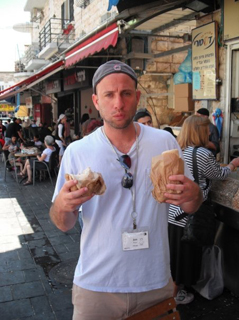
"A reader lives a thousand lives before he dies, the man who never reads lives only one."
This quote from the fifth installment of George R.R. Martin's "A Song of Ice and Fire" series sagely states the reason why many of us are so passionate about reading. We can project ourselves, if just for a little, into the life of a character. This character can take us to faraway lands, introduce us to interesting people, and give us a bit more excitement than we experience in our regular routine. My tastes often gravitate to Fantasy and Science Fiction for that reason exactly. Because just for a few minutes a day it feels good just to be somewhere else. But since finishing such quality Fantasy like "A Song of Ice and Fire" and "The Night Circus," I struggled to find something that kept me engaged.
After reading a page or two of a few books I settled on The Art of Fielding because I thought the author was Jewish, thus giving me a reason to discuss it in Oy!, and because I thought the book was about baseball. I've yet to confirm the author's religion, and can say with all honestly that "The Art of Fielding" is NOT about baseball. Set at the tiny Westish College on the shores of Lake Michigan, the novel follows several characters as they struggle to achieve their dreams and find it’s not as easy as perhaps it should be. My opinions on this book are mixed because the story is great, but the writing a little simplistic. One passage goes on for pages detailing a character's need to clean a dirty pan in her boyfriend's kitchen. Maybe I'm just used to descriptions of Hippogriffs, Niffins, and Valyrian Steel, but to me this was mundane. That said the character's struggles and hidden insecurities are portrayed beautifully and in a manner to which we can all relate, making it a magnetic read. I can't give The Art of Fielding a full recommendation, because it’s not for everyone, but worth a shot if you're looking for some solid, non-fantastical drama.
On The Horizon.
Normally I discuss books that I’ve read, and only give brief summaries to avoid spoilers, but here are a couple I plan on reading over the next few months. Hopefully enough people will get on board so I won't have to worry as much about spoilers and we can have a real discussion on the books.
The Prisoner of Heaven—Carlos Ruiz Zafon
July 10th—Hardcover
July 17th—Kindle
The author of the beloved The Shadow of the Wind and The Angel's Game continues the saga of the Sempere family in The Prisoner of Heaven. Because I despise spoilers I haven't read one summary or review of Zafon's latest, but it seems it will continue with the story of Daniel and Bea, and so we can assume this is a sequel to Shadow of the Wind. If you're not familiar with Zafon or the novels mentioned here, get on it! Both of his full length novels that have been translated to English are some of my favorite books ever. Published in 2005, Shadow of the Wind begins in Franco era Spain at The Cemetery of Forgotten books, where Daniel Sempere is told to choose one book, however cautioned that it’s more the book that chooses the reader, not vice-versa. As Daniel begins reading he discovers this book is eerily similar to his own life and searches for more books by the author, only to find a mystery surrounds the author and his writing. Daniel pledges to uncover the mystery and learns some valuable lessons about love and friendship along the way. If you've read both Shadow of the Wind and Angel's game I'm sure you're as excited as I am for Prisoner of Heaven. If not, I recommend reading them in that order before picking up the newest installment. If you still haven't gotten enough Zafon after that you can check out his shorter, YA novels The Prince of Mist and The Midnight Palace.
The Casual Vacancy—JK Rowling
September 27th—Hardcover and Kindle
Let me say that again. JK Rowling. That name should speak for itself, but I'll continue. Yes. Harry Potter author JK Rowling is trying her hand at an adult novel in The Casual Vacancy. This non-magical novel will take place in a small town in England where a vacant town-council seat causes war between the residents. Though the description sounds odd, so did Hogwart's School of Witchcraft and Wizardry, and based on the hundreds of millions of copies sold and Rowling's $900million net worth, I'd say that went pretty well. Many are skeptical that Rowling can write something great that is neither YA nor fantasy. Personally I disagree. Harry Potter was popular not only for the content, but for the quality of writing. A lot of people can write about wizards and wands and dragons, and not make a billion dollars doing it. Rowling is a genius. She could write about the many uses of sandpaper and it would become a bestseller. I could go on and on, but to be honest I'd be embarrassed to even describe how much I admire this woman, and being merely a Muggle won't allow myself to try. Harry Potter got me hooked on reading, so whether or not Rowling can successfully break into the world of adult novels, I’m not sure, but I know I owe it to her to give The Casual Vacancy a fair shot.
Mountain Casual
Permanent linkI am currently in the midst of a week-long Colorado vacation with my boyfriend. We spent the first part of our trip in Vail, moved on to Breckenridge for the Fourth of July, and are now in Colorado Springs for a national conference during which he’s speaking. We will move on to Denver for the weekend for some fun in the city.
Aside from learning more about the terrible devastation of the forest fires which, thankfully, are predominately contained in Colorado, I have also been able to hone some new fashion knowledge and styling tips I’d like to share with Oy! readers.
Upon checking into our wonderful Vail resort, The Vail Cascade Resort & Spa, I learned the term “mountain casual” when we inquired about the type of dress expected at the restaurants in Vail Village. Having only made a couple of brief visits to Colorado in the past, I am still learning about this mountain culture and of course, my ears perked up at this intriguing new (at least to me) fashion term.

Prior to my trip, I tried to get in the mountain spirit and purchased this awesome summer cowboy hat at one of my all-time favorite stores, Calypso St. Barth, which is on Oak Street in Chicago. I love that the hat is rustic but feminine and incorporates some Bohemian edge with feathers that dangle from the side. I sported it with a simple navy blue cotton Theory sundress at the popular Sunday farmer’s market in Vail Village. My look was casual and Western-inspired, blending right into the culture. In Vail and Breckenridge, I had a blast browsing the amazing inventory at the traditional Western-wear stores. A nice and authentic pair of cowboy boots are quite the fashion investment! They usually range from $500 - $1,500 and with the various colors, textures, types of leather and embroidery, they can be true works of art.
In addition to traditional Western-wear, the “mountain casual” dress code incorporates the state’s very active, healthy way of life. Skiing/snowboarding, hiking, trail running, and boating, just to name a few activities, are all part of the lifestyle here in the Rockies. The corresponding sporty attire can also be quite stylish, and is worn day-to-day by residents and visitors alike. Stores like Burton, North Face and Spyder line the streets of the resort towns and an array of active-wear boutiques sell countless other lines.
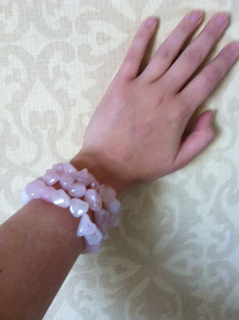
Lastly, I think one of the most fun elements of the “mountain casual” look is the natural minerals and metals from the land that are often incorporated into accessories. I found these beautiful bracelets (3 for only $10) at Nature’s Own, an impressive science and nature store in Breckenridge. These will nicely compliment my more urban Chicago wardrobe, adding a natural, rustic twist. In fact, while in Vail, I purchased an elegant cotton maxi dress made by L.A. designer, Bella Luxx at the boutique Luca Bruno. I’m looking forward to combining the bracelets and the dress with a great pair of wedges for an overall summer-chic look.
Evidently, I was inspired by this “mountain casual” style. The laid back yet still polished fashion here is refreshing and unique. In fact, I plan on taking it back home with me to Chicago. I’ll wear my cowboy hat out and about on the weekends, and the bracelets will come in handy to add extra punch and interest to plenty of my outfits. I’m excited to return on another trip here to further develop my own version of this look and I’m sure a winter trip will open up a whole new chapter!
Matchmaking: Doggie-style, part II
Permanent linkToby
I’m that person now. Who only talks about her dog. And cries every time she takes him to the vet.
And it only took four days. That was fast.
Let me back up a bit…
Over a month ago I wrote about our (Jason and my) search for a rescue dog and how frustrating it had been. I’m not one for clichés and I don’t believe in fate, but I finally understand when people say something was meant to be. All the frustration we went through— and there was more I didn’t even write about— was so that we would end up with our dog, Toby.
Literally just two weeks ago, Toby was in a puppy mill somewhere in Missouri. In all likelihood, he was living in a tiny crate in awful, dirty conditions that caused him to suffer from terrible allergies which he compensated for by constantly gnawing at his paws. He couldn’t sit down comfortably because his crate floor was barbed wire (easy cleaning, when they bothered). He probably never saw the light of day or got to roam free. He was fed just enough to stay alive and whatever it was, it was crap. He’s anemic and two pounds under weight— which is a lot when you are only supposed to weigh eight pounds— and his teeth are very decayed. As I write this, he is having serious dental surgery to repair (and remove) his neglected teeth— hence why I cried at the vet this morning. He also probably had fleas, worms and whatever else.
And he was one of the lucky ones. He served a purpose, which kept him alive for all those years. (We think he is at least four years old.)
Side note: I try not to ever get political in my posts, but bear with me I'm about to now. I've learned a lot about the puppy mill industry in the past few days and how unbelievably awful it truly is. You might not know it, but those cute little puppies you see in pet stores and online come from puppy mills where the mommies and daddies never get to see the light of day. You should NEVER EVER buy a dog from a pet store. EVER. Even if they claim they don't use puppy mill dogs, they are lying. Puppy mills are just evil, awful places. And the people who run them belong in jail. Adoption should always be there first option, but if that's not right for you, there are plenty of reputable places and breeders out there who don't use puppy mill dogs. Here is a great check list for finding reputable places to buy puppies.
Fortunately, Toby’s story has a happy ending. His puppy mill got raided and hopefully has been shut down for good. One can only pray the evil people who ran it are going to jail and paying hefty fines for their unconscionable cruelty. And Toby got sent to one of my new favorite places— Chicago Canine Rescue.
Another side note: If you are looking to adopt a dog in Chicago, visit Chicago Canine Rescue. They are fabulous to work with and they usually have a large and varied selection of dogs and cats— they even get many purebreds. Toby is a schnoodle, otherwise known as a schnauzer-poodle mix, but schnoodle is so much more fun to say.
So with a little blood, sweat, tears and countless phone calls, we got accepted to adopt Toby and he moved into our home this past Sunday where he is starting a new, happy chapter of life.
Now I want to brag. My little dude is the smartest, sweetest, most adaptable dog— or any living being for that matter— I’ve ever met. One would think after the horrible beginning he had, he would hate people and be terrified of everything. While loud noises do scare him and he still prefers his crate to his nice comfy bed, he is already adjusting so well!
He sleeps through the night with only minimal barking and he hasn’t had an accident in the house since the morning after we got him! He’s already learned his new name and seems to understand the “come” command. I’m pretty sure he is a genius.
And while he doesn’t really understand, yet, how to sit on a lap or snuggle with a human, he loves being scratched behind the ears and stand on you (awkwardly) as you pet him. He also gets so excited when you praise him and follows us everywhere we go in the house. He’s also doing well meeting new people and loves other dogs. I’m very proud.
I could go on and on, but I’ll wrap it up here. A few months ago when my parent’s dog passed away, I couldn’t imagine ever owning another animal and loving him as much, but Toby has already stolen my heart and helped me heal from the pain of that loss. I know I’m using another cliché, but for as much as we are hopefully giving him, Toby has already given us so much more. The best decision I’ve ever made, was adopting Toby.
Innovation: it's not just a figment of my imagination
Permanent link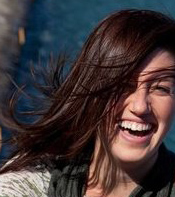
Recently, while on a girls' trip to Orlando with my mom and sister, we pulled out the vintage 1998 Disney World park passes that in true Disney fashion, magically still had two days left on them. So we put on our mouse ears and ventured back in time to the Magic Kingdom and Epcot.
When I was a kid, we visited Disney often, sometimes twice a year. My favorite ride, oddly enough, was always Figment—you know, the little purple dinosaur, dragon guy who sang about imagination? Apparently, I used to make my family ride it again and again and again and I still have my Figment doll proudly displayed in my childhood bedroom.
So it was no surprise when this grown up, married woman dragged her protesting mom and sister onto the Figment ride. I'm not going to lie, this time around I found the ride just a little bit creepy. But as cheesy as it is, the message of Figment's song, "Just One Spark," stuck with me:
Imagination, imagination.
A dream, can be a dream come true.
With just that spark, in me and you.
Hey, I turned to my mom, as the train moved slowly through the ride's neon scenery; maybe this is the reason I decided to work in a creative field.
I was reminded again of Figment Tuesday night when I attended Launch Night for the 2012 JCC PresenTense Chicago Fellowship. On the cover of the evening's program, it reads "it starts with an idea." The program offers a competitive six-month fellowship for young social innovators who want to develop their socially responsible ideas into sustainable businesses. It aims to "engage young Jewish adults in Chicago around a communal goal and provide them with an avenue to mend the world through social entrepreneurship."
Each of the 12 fellows had that one idea, that one spark, which they hope will better our Jewish community and presented a pitch to those of us in the audience that night. Many of the ideas focused around food and others around Israel education, music and community. The presentations were incredibly thoughtful and insightful, but what struck me the most was the energy in the room, which by the way, was overflowing with people. While there were some familiar faces, it was refreshing to see so many people who were new to me and so passionate about Jewish life in Chicago.
I've often heard people say that innovation happens on the coasts and that the Midwest is more staid and traditional. I've heard this specifically in reference to Jewish communal life, that people take more risks on the East Coast or in California, than they do here in Chicago and other Midwest cities. I think to some extent it's true, and just the nature of each region's demographic. But innovation is taking place right here in Chicago's Jewish community—the spirit of last night's event confirmed what I already knew.
Innovation is happening in the minds of these fellows and the fellows to come. And innovation is happening here, at JUF. Like other Jewish Federations and Jewish institutions throughout the country, JUF is considered by many to be old school and traditional. And we are old school, in that we are an incredibly successful organization that sticks with what works. But what many people don't see is that we are also an organization on the cutting edge of innovation. YLD's Big Event, our Israel Education Center, our Joyfully Jewish programming for young families, Oy!Chicago, VOICES: The teen giving circle…I could go on.
This is the kind of stuff that motivates me, that gets me excited as a young Jewish professional, about the future of our community. The energy is there, and the potential is great. From here we need to harness that energy, let it flourish and grow and watch what happens.
We should all take a nod from PresenTense and fashion ourselves social innovators. I've loved the term since I first heard it. It makes me think of Figment, of someone who uses their creativity to make the world a better place. It's what I want to be when I grow up. Hopefully, I'm already on my way.
The Frashley Chronicles: Sitting, Hoping, Waiting, Wishing
Permanent linkHere's a little background about me, as this is my first blog post. I spent the 2010-2011 school year teaching English in Grenoble, France. Before that, I spent a year working in the heart of Chicago in the Jewish non-profit community. When I was abroad, my eyes were opened to the everyday experience of the Jewish community in my town and in the country at large. I experienced what it meant to me to be not only Jewish in France, but a Jewish, young, female, American in France. It was a ridiculously fun, thought-provoking and thrilling seven months and I'm excited to share these stories. By the way, all thoughts and opinions are purely my own…I take full responsibility for any sweeping generalizations. With that out of the way, let's start at the very beginning (a very good place to start).
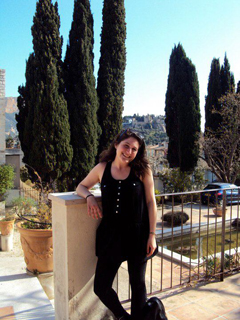
I remember this time two years ago like it was yesterday. I was wrapping up my job at a Jewish non-profit office and getting ready to embark on my biggest adventure yet: a seven-month stint in France teaching English. I'd gone abroad to France before for a semester. I spent my junior spring in Aix-en-Provence, an idyllic town in the South of France.
However, my tenure as an English teacher in France was shaping up to be a completely different beast. This time around, there would be no host family, no pre-arranged dates of arrival, and no designated points of contact. As July wore on, the logistics of what I was about to embark upon became clear. I came across the first few of many truly "oy" moments.
Between booking flights, the search for accommodation and everything in between, I looked to my experience as a jack-of-all-trades administrative assistant for guidance. In the short months since graduating college, my little exposure to the "real world" molded me into a master multi-tasker. So, naturally, I built a Google doc of all the potential obstacles to clear on my way to La Belle France. That quickly got ditched for afternoons spent daydreaming, waiting and wishing for more news. A word about France for those who haven't been: nothing moves quickly.
As July blurred into August, I still had no word of what city, what town, what village I would be living in. I tried desperately to keep my cool as the days inched forward. I often returned to my favorite French expression in order to stay calm: tout est bien qui finit bien. All's well that ends well. And sure enough, on a sweltering August day, I received a letter in the mail postmarked from Grenoble, France.
The Teaching Assistant Program in France (aka my means of making all of this happen) allows applicants to pick their top three areas of choice to live and teach. Grenoble was my first choice. I knew it was in the middle of the French Alps and I was ecstatic to find I was placed in the city center, after much careful deciphering of the confusing placement letter. I swiftly booked a flight and resumed daydreaming. The gaping hole in my abandoned Google doc? A place to live. Nothing to fret about, right? "Plenty of kids go on this program," I thought to myself. Fifteen hundred from America each year, in fact. But, it never hurts to explore the options. Again, I turned to work for advice.
I breathlessly explained my situation at the next staff meeting. "Contact the Chabad over there," my boss declared without skipping a beat. I took her advice.
It was surprisingly easy to locate. A simple search of "Chabad Grenoble" brought me to the Beit Chabad web page and the Rabbi's email address. I wrote him right away, sprinkling in my efforts with the Jewish non-profit community, mentioning that while not very religious myself, I'm well acquainted with plenty of people who are and of course, would respect the rules of any household.
As quickly as I sent the email, hoping on hope it would garner some sort of response, a reply from Arie R. popped into my inbox. Written in English no less, letting me know that he already sent word that a nice Jewish girl from Chicago was looking for a place to stay and he would follow up as soon as possible.
I was truly, deeply touched. The fact that someone who had never met me and knew absolutely nothing about my life stepped up to bat for me in a way that really, really mattered, it left me with such an incredible feeling. And this instance of the connectedness of the global Jewish community was just the beginning.
The plot thickens. Join me next time for the wild and crazy adventures of living with the family I found through the Grenoble Chabad.



.jpg)



